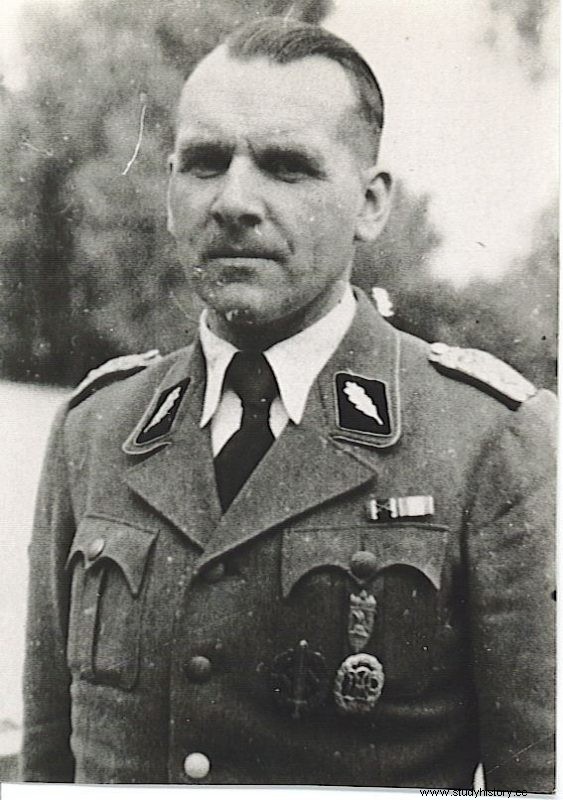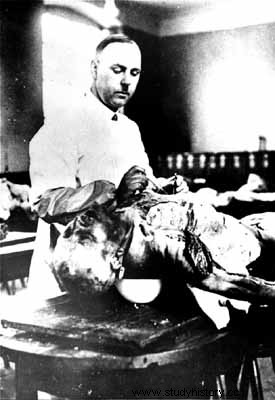On November 23, 1944, the great Nazi dream of creating a great European university that would attract the brightest minds of the continent came to an end. That day, US troops entered the city of Strasbourg, home of the Reich University, finishing another of Nazi Germany's megalomaniac projects.
It was already during the Second World War when this project was launched. The goal was to bring Germanic science and thought to the West. At the same time, this elite university will be the scene of numerous crimes related to medical research.
On March 21, 1933, the same day that Germany opened its first two concentration camps, the Reichstag, now converted into a Nazi chamber of representation, passed animal protection laws. Under these laws, vivisection was prohibited in medical laboratories for any type of scientific research. People considered Untermensch , subhuman, would take the place of laboratory animals in medical research.
In countless trials and interrogations carried out on those responsible for thousands of Nazi crimes, the response of the accused was always the same, I was following orders . After the Second World War, those responsible for the crimes at the University of Strasbourg presented the same attitude. However, today it is known, because documents have been found in this regard, that it was the doctors of the university themselves who requested to be able to carry out this type of experiment.
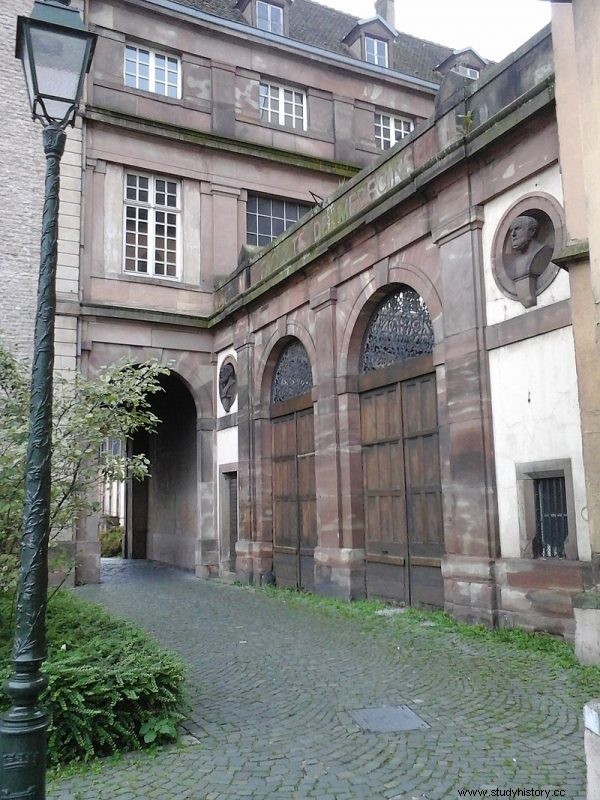
Ultimately responsible for what happens in the medical school is the dean, Dr. Johannes Stein. Following the usual policy of the German Federal Republic to hide as many crimes as possible, especially of people who continued to be active after the war, there is no public photograph of Dr. Stein that is available on the internet (consult December 2019).
The founding of the Reich University
November 23, 1941. Exactly three years before the Allied invasion. That day the opening of the Reich University in Strasbourg, in the former French province of Alsace, which is once again part of Germany after the fall of the Gallic country, is celebrated in style.
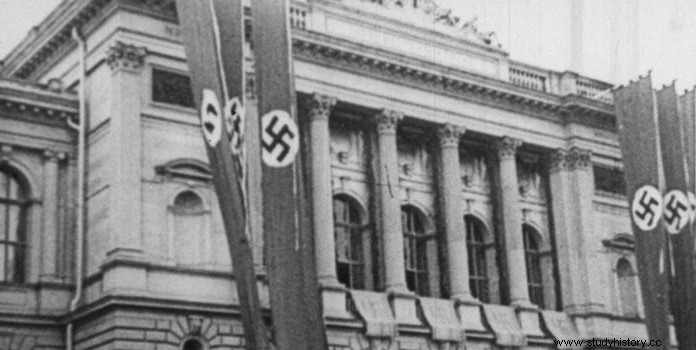
800 guests attended the opening ceremony, where a Wehrmacht regiment carried the flags of the new owners of the place. The university had been the scene of military parades at the time of the Second German Reich. However, on this occasion, the old imperial banners were removed to make way for the flags of the Third Reich.
The most prominent guest was Robert Wagner, Gauleiter of Alsace. Wagner was known as the butcher of Alsace , since he had more power than any other gauleiter in Nazi Germany and did not hesitate to use it. After the war he was sentenced to death and executed for the murder of 464 Jews in the Gurs concentration camp.
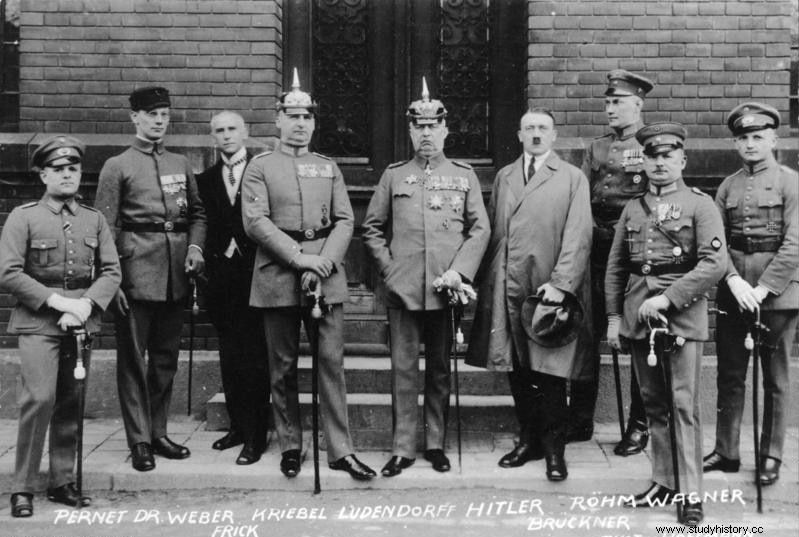
Next to the speakers' gallery where Wagner inaugurated the university, 71 professors accompanied the gauleiter. These men would give a Germanic and National Socialist face to the new university. One of those faces is August Hirt, who will be in charge of the anatomy area at the Faculty of Medicine.
That same day, Hirt meets Wolfram Sievers, a senior leader of the Ahnenerbe, the organization dependent on the SS in charge of scientifically investigating the Aryan past of the Germans. Sievers had already heard about Hirt's investigations. That day they will seal a criminal cooperation agreement.
The crimes
Just three months later, on February 9, 1942, August Hirt submits a specific research proposal to Director General Sievers:“an extensive collection of skulls is available, of practically every race and people, but of the Jews there are so few that their study does not allow conclusive results, The war in the east now offers us a solution to this lack» .
This is the moment when the Strasbourg Medical School becomes a center for inhuman experiments. Dean Johannes Stein, who is the only professor who always teaches his classes in uniform, is in charge of the largest faculty in the university. Up to half of the students study medicine.
The Faculty of Medicine is equipped at this time with the latest technology available. An electron microscope is even requested for biomedical research, one of 12 in all of Nazi Germany. 28 professors will make up the faculty's teaching staff, one of the best in the country both for their knowledge and for their political loyalty.
The head of anatomy, August Hirt, has been a member of the SS since 1933, as have most of his fellow students. Before arriving in Strasbourg, Hirt was already known for his experiments with mustard gas. Thanks to his reputation and his relationship with the Ahnenerbe, Hirt will soon receive permission from Berlin for his human experimentation.
The Natzweiler-Struthof concentration camp, a few kilometers south of Strasbourg, will be the starting point for the victims of the Strasbourg Medical School. This is the only concentration camp on French territory. August Hirt himself will come here several times to select his victims in his mustard gas experiments.
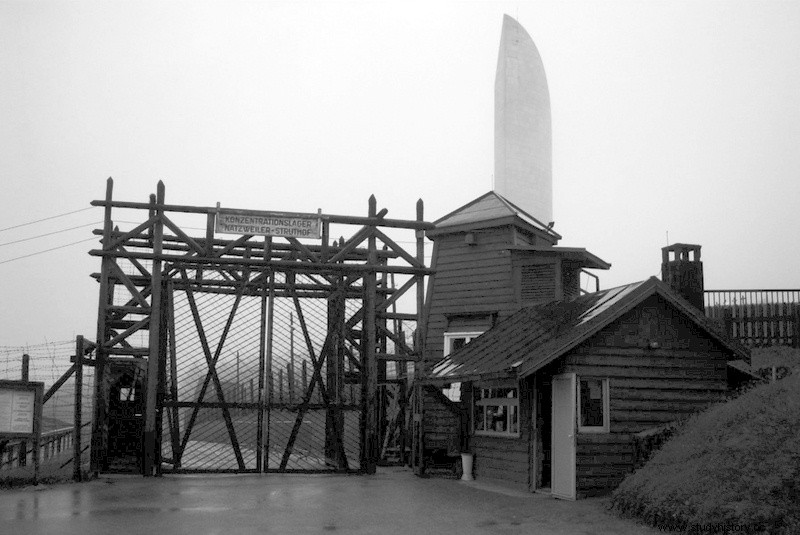
Hirt began his experiments on November 12, 1942. The experiment consisted of spraying 15 prisoners with drops of mustard gas under their arms and observing their reaction for several days after applying an antidote.
In addition to the mustard gas experiment, Hirt took the opportunity to expand his collection of Jewish anatomy. For it. On November 2, 1942, the Ahnenerbe requests that Jewish prisoners be transferred from Auschwitz, since there are no such prisoners in the Natzweiler camp.
In addition to Hirt, two other university professors received authorization from the Ahnenerbe for research with humans:the virologist Eugen Hagel for his research against typhus and typhoid fever and the doctor Otto Wittenbach, who is researching the effects of phosgene gas about humans.
In 1943 a gas chamber was built under the camp barracks for Hirt's experiments. However, when its construction was finished, Hirt still did not have the experiment prepared for him. Hirt intended to use the gas chamber as part of the project to obtain skeletons of Jews, but for this he needed an elevator to move the bodies and a way to dissolve the tissues of the dead bodies.
Given Hirt's delays, it will be Wittenbach who will premiere the gas chamber. Wittenbach used the chamber to test an antidote for phosgene gas. For this experiment, the prisoners were vaccinated with the antidote developed by Wittenbach. They were then introduced into the gas chamber, where the prisoners themselves had to break the vials with the phosgene gas that had been provided. The prisoners had to resist inside the chamber for periods of between 20 and 30 minutes. As in any experiment, there is a control group that is not given the vaccine.
In 1943, Hirt is promoted to dean of the Strasbourg Medical School as 40% of the professors are called up at this time. His research is considered crucial to the war, so he is kept in his academic position. At this time, Hirt already has the project of the Jewish skeletons ready. At this time, the Ahnenerbe anthropologist Bruno Beger travels to the Auschwitz concentration camp to select the prisoners he will use in the project.
In August 1943, 86 prisoners will arrive from Auschwitz at the Natzweiler camp. Three others have already died during their transport from occupied Poland. The survivors were killed at Natzweiler by Nazi German officials. As of August 11, 29 women and 57 men were gassed with prussic acid in the camp's gas chamber. Still warm, the bodies are transferred by truck to the Reich University Medical School. There they are kept in the basement. Hirt's project was never completed. The bodies were found dissected in the basement of the Faculty after the war.
On March 17, 1943, Department H, a group in charge of biomedical research for military purposes, met in Strasbourg. At this meeting, Hirt and Wittenbach presented the results of their human experiments to Sievers and Dean Stein
The end of the Reich University
After the allied invasion of June 6, 1944, the fall of Strasbourg was drawing near. At this time many of the students are called up. The teachers began to put their families to safety before the foreseeable arrival of the allies. On August 3, 1944, the bombs began to fall on Strasbourg. The release would not arrive until November 23 of that same year.
After the war none of the professors at the Reich University were brought to justice. Most rebuilt their careers and ended their days as respectable professionals in the Federal Republic of Germany.

